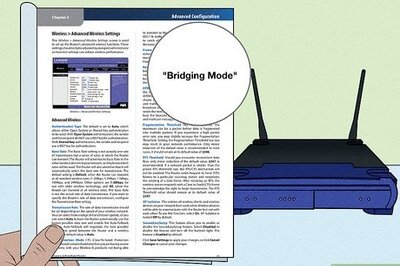
views
A United States intelligence report has said that despite some force pullback from the Line of Actual Control, the tension between India and China remains high as China seeks to use coordinated tools to demonstrate its growing strength and compel regional neighbours to acquiesce to Beijing’s preferences, including its claims over disputed territory.
“China-India border tensions remain high, despite some force pullbacks this year China’s occupation since May 2020 of contested border areas is the most serious escalation in decades and led to the first lethal border clash between the two countries since 1975. As of mid-February, after multiple rounds of talks, both sides were pulling back forces and equipment for some sites along the disputed border” the Annual Threat assessment of the US intelligence community, by the office of the director of the national intelligence read.
The report states that Beijing is increasing combining its growing military power with its economic, technological, and diplomatic clout to secure what it views as its territory and regional preeminence and pursue international cooperation at Washington’s expense.
As per the US intelligence report, in the South China Sea, Beijing will continue to intimidate rival claimants and will use growing numbers of air, naval, and maritime law enforcement platforms to signal to Southeast Asian countries that China has effective control over contested areas. China is similarly pressuring Japan over contested areas in the East China Sea.
“China will continue pursuing its goals of becoming a great power, securing what it views as its territory, and establishing its preeminence in regional affairs by building a world-class military, potentially destabilizing international norms and relationships. China’s military commitment includes a multiyear agenda of comprehensive military reform initiatives”, the report reads.
The report suggests that China has been building a large and increasingly capable nuclear missile force that is more survivable, more diverse, and on higher alert than in the past, including nuclear missile systems designed to manage regional escalation and ensure an intercontinental second-strike capability.
“Beijing will continue the most rapid expansion and platform diversification of its nuclear arsenal in its history, intending to at least double the size of its nuclear stockpile during the next decade and to field a nuclear triad. Beijing is not interested in arms control agreements that restrict its modernization plans and will not agree to substantive negotiations that lock in US or Russian nuclear advantages”, the report reads.
On India Pakistan relations, the report says that the chances of general war between the two nations was unlikely, but the crisis between the two is likely to become more intense risking an escalatory cycle.
“Although a general war between India and Pakistan is unlikely, crises between the two are likely to become more intense, risking an escalatory cycle. Under the leadership of Prime Minister Narendra Modi, India is more likely than in the past to respond with military force to perceived or real Pakistani provocations, and heightened tensions raise the risk of conflict between the two nuclear-armed neighbors, with violent unrest in Kashmir or a militant attack in India being potential flashpoints”, it read.
On Afghanistan, the report suggests that the prospects for a peace deal will remain low during the next year.
“The Taliban is likely to make gains on the battlefield, and the Afghan Government will struggle to hold the Taliban at bay if the coalition withdraws support. Kabul continues to face setbacks on the battlefield, and the Taliban is confident it can achieve military victory”, it reads.
Read all the Latest News, Breaking News and Coronavirus News here. Follow us on Facebook, Twitter and Telegram.




















Comments
0 comment